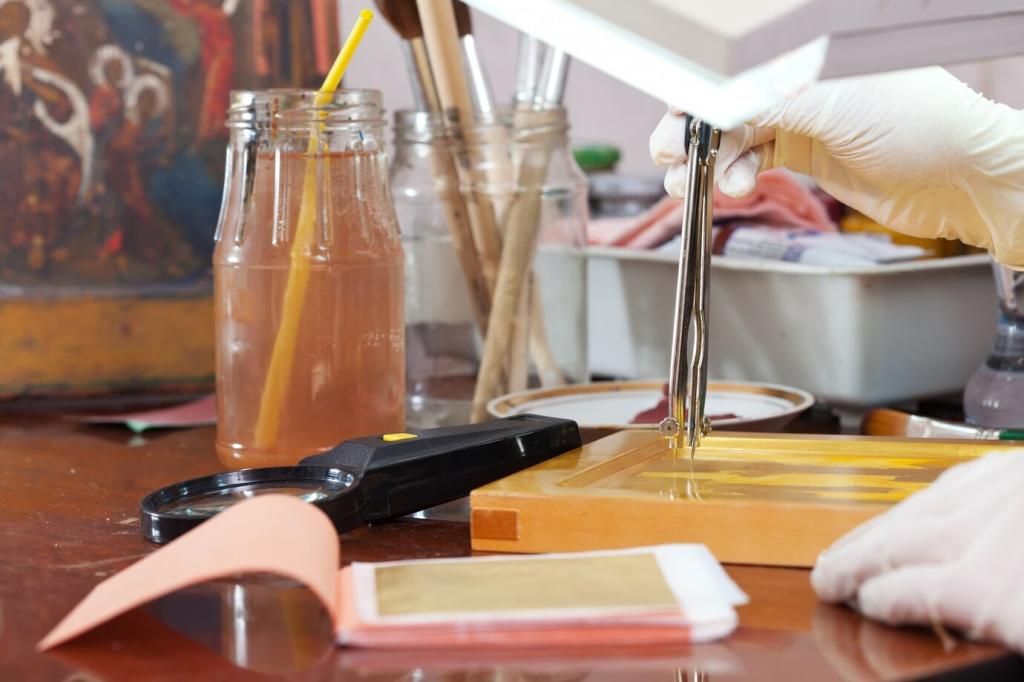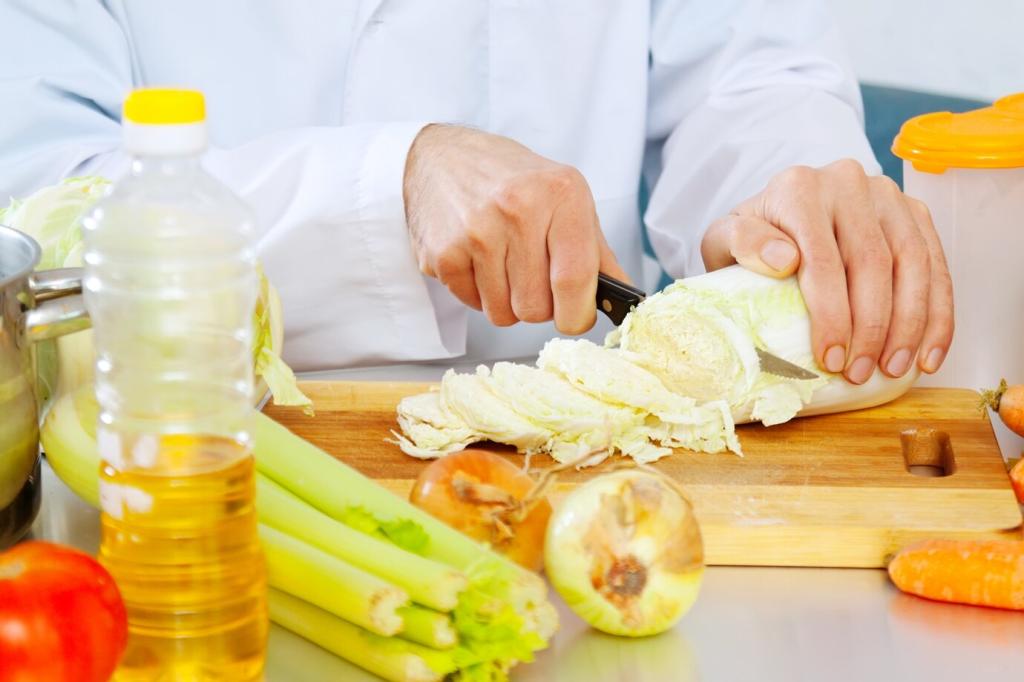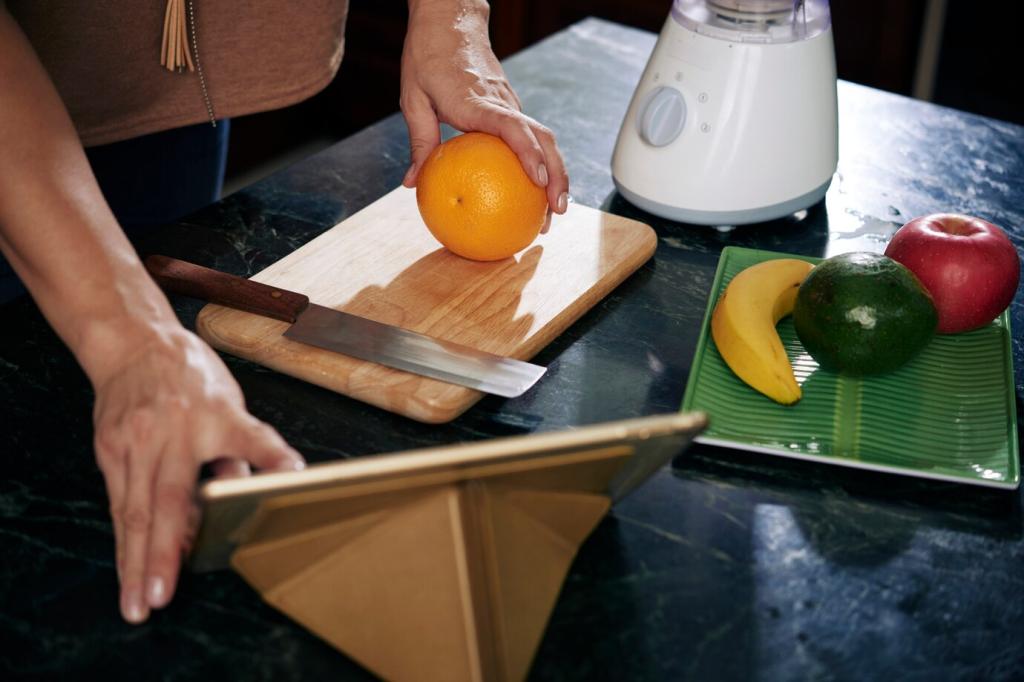Step into a world where grain, patina, and history speak. Today’s journey focuses on identifying wood types in antique furnishings—practical clues, human stories, and hands-on wisdom. Read on, ask questions, and subscribe if you love unlocking the woodcraft secrets that make antiques truly sing.
First Impressions: Color, Grain, and Figure
Walnut tends toward a rich chocolate brown, while mahogany leans warm and reddish, especially under old shellac. Decades of oxidation and sunlight deepen tones unevenly. Peek inside drawers, underneath tops, or behind backboards to find protected areas where original color survives, offering trustworthy comparison.
First Impressions: Color, Grain, and Figure
Quartersawn oak flashes medullary rays like tiny silvery ribbons, while mahogany may reveal ribbon stripe or subtle fiddleback under raking light. Maple’s bird’s-eye dots dance tightly across the surface. Antique hand-planing and scraping often exaggerate figure differently than modern sanding, adding helpful, period-specific visual cues.
First Impressions: Color, Grain, and Figure
Heavy stains can disguise species, turning pale pine into faux walnut or warming cool cherry into mahogany’s territory. Inspect the undersides of stretchers and inside aprons for unaltered wood. A careful alcohol swab in a hidden spot can reveal dyed shellac. Share your tricky finishes in the comments.
Touch, Weight, and Scent: Tactile Identification
Lift a small drawer: oak feels noticeably heavier than pine or poplar of equal volume. Old-growth hardwoods often yield slender, confident legs without wobble. Moisture content matters, too; antiques acclimated indoors behave differently than fresh repairs. Compare pieces side by side to calibrate your internal scale.
Touch, Weight, and Scent: Tactile Identification
Crisp carving and sharp arrises suggest denser woods like walnut or mahogany, while softwoods bruise more easily under historical tools. Hand planes from the 1800s can leave tear-out in ring-porous oak, especially against the grain. Look underneath drawer rails and chair stretchers to find untouched surfaces revealing true hardness.




Drawer sides and bottoms often use pine, poplar, or oak as secondary woods, while the show wood may be mahogany or walnut. Narrow, uneven dovetails can indicate handwork. Look for tear-out or compressed fibers within joints to infer species. Share photos of your dovetails for group sleuthing.

Field Tests: Safe, Minimal, and Reversible
Ring-porous oak shows bold earlywood pores arranged in bands, while diffuse-porous woods like maple display even, tiny pores across the surface. Some tropical species have occluded pores with silica. Finishes complicate visibility, so use raking light. A ten-power loupe becomes your best friend on difficult surfaces.

Stories from the Workshop: Lessons in Identification
The “Oak” That Was Chestnut
A dealer swore the coffer was oak. But the rays were faint, worm tunnels elliptical, and the scent sweet and woody. Underneath, the coarse, ring-porous texture lacked oak’s telling flecks. Chestnut, not oak—saving a buyer from mispricing. Tell us about your most persuasive, small-but-decisive clue.
Walnut Disguised as Mahogany
An American sideboard wore a warm red glaze that read mahogany at first glance. A loupe showed pores unlike Swietenia, and the heartwood ran chocolate beneath. Finding a red-stained rag in the drawer clinched it. Walnut under dye. Always corroborate finishes with structure before declaring species with confidence.
Pine with a Walnut Soul
The grain looked elegantly dark, but a chipped corner revealed pale softness. Inside, resin scent and wide growth rings sang pine. The surface had been masterfully faux-grained to please fashion. Even illusions teach. Keep curiosity, share your faux finishes, and subscribe for more tales that sharpen our collective eye.
Caring by Species: Preservation Without Regret
Finishes That Suit the Wood
Walnut often glows with oil and wax, while mahogany’s depth sings under shellac and careful French polish. Oak’s tannins react with water-based products, risking unexpected staining. Always test in hidden areas and let the wood’s pores and figure dictate sheen. Share your finish successes, failures, and hard-earned lessons.


Humidity and Movement Matters
Quartersawn oak resists cupping, while maple and cherry move more with seasonal changes. Respect panel shrinkage and don’t force joints tight in winter. Stable indoor humidity protects veneers and marquetry. Tell us how your climate treats antiques, and subscribe for seasonal checklists tailored to different wood behaviors.
